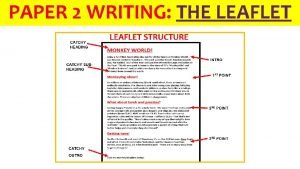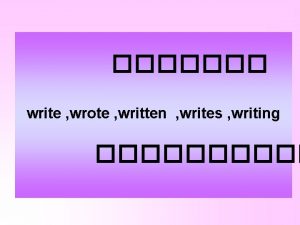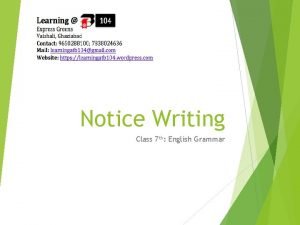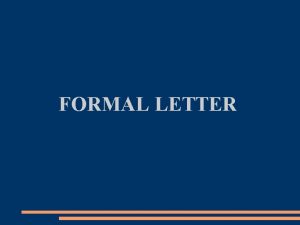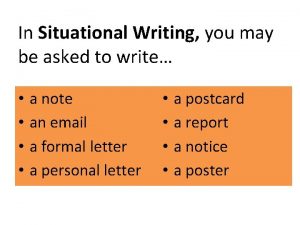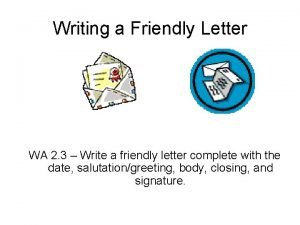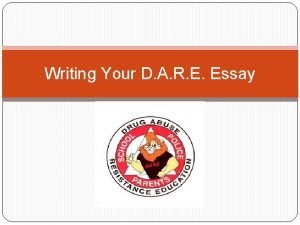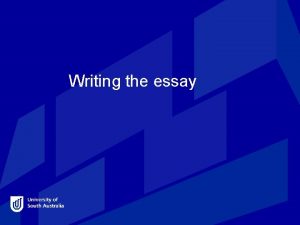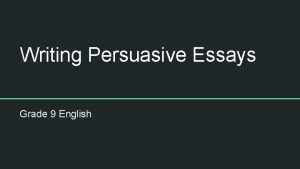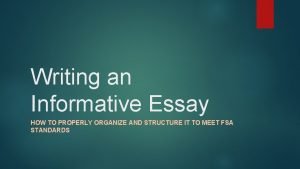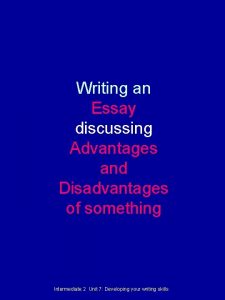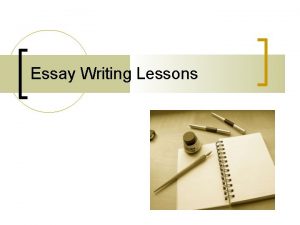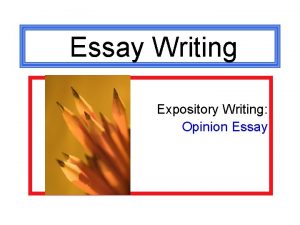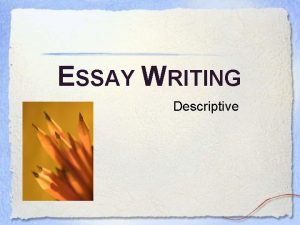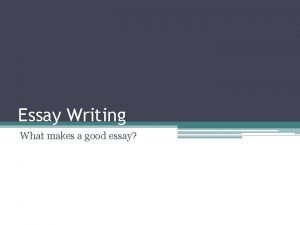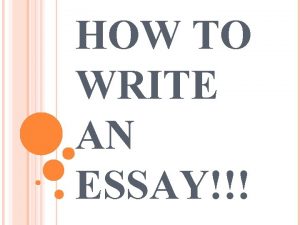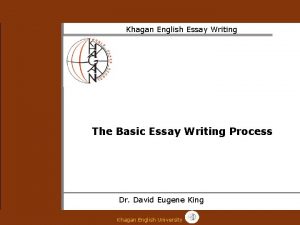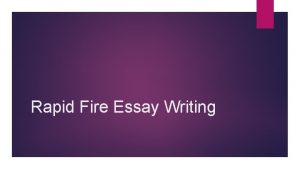HOW TO WRITE AN ESSAY WRITING AN ESSAY














- Slides: 14

HOW TO WRITE AN ESSAY!!!

WRITING AN ESSAY CONTAINS… Sticking to the topic Planning the essay An interesting Introduction A persuasive Body An effective Conclusion Reviewing

STICK TO THE TOPIC!!! Choose a topic you are passionate about, it makes writing easier. If you can’t choose the topic, then study it to make sure you know it better. It’s very important to stick to the scope… waffling, getting sidetrack loses marks. Branch out using main and sub headings Develop ideas using facts, personal opinions in a logical order

PLAN!!! Planning gives you an idea of where to begin and how the essay should flow Make sure your essay is in chronological order so it is easy to read Gather facts and put them under headings they belong Bullet point ideas will make writing the essay easier Before you begin writing the essay, make sure your plan is in order so you won’t miss out on anything to write in the essay

INTRODUCTION TO THE ESSAY Topic and purpose of the essay Indicates structure of the essay Seizes interest and makes reader want to read on Forecasting: If the essay is about… Ø Conflict = How do you aim to resolve it? Ø Challenge = Argue a belief/stereotype Introduction indicates whether you essay will be interesting or boring. It gives the marker an instant “feel” of the essay! So make sure it’s captivating from the start.

BODY OF THE ESSAY Makes sense. Logical, persuasive facts and language. No waffling (going off topic) or repetition of points. Facts to back up your idea. Point of paragraph Explanation of point (go into detail) Example (facts to back up idea) Relevance (why? ) Mini conclusion Link to next paragraph for flow/ easy-reading

CONCLUSION OF THE ESSAY Summarize main points (usually don’t introduce new ideas) Make sure the audience understands the main point of the essay A moral passed on and a lesson learned from your essay Gives closure

REVIEWING THE ESSAY Introduction = purpose of essay Body = coherence Conclusion = summary Remove/Rewrite parts to create a sense of “unity” and completeness to the essay Proofread Appropriate length Keep rereading the essay! Make it a masterpiece.

MAKING YOUR ESSAY STAND OUT Structure your essay to make it easy to read and understand Have a unique point of view so your ideas don’t sound like the others Back up your ideas with solid facts to persuade the reader to your side Proofread until your essay is perfect Write with passion

TEN GOLDEN RULES OF ESSAY WRITING 1. Answer the specific question set – relevance is essential! 2. Underline the key words to focus your planning and ensure you will answer the right question 3. Make a paragraph by paragraph plan which presents a developing argument to answer the question

4. Avoid waffling in your opening paragraph – focus immediately on the given issue or topic. 5. Spend the rest of the first paragraph outlining the ground you intend to cover in the essay 6. Make one point in each subsequent paragraph using a topic sentence and with a summary or link it to the next paragraph.

7. Use linking words at the beginning of paragraphs to help your readers follow the development of your essay. e. g. Nevertheless, … We can see, then, that… Furthermore… Thus… With this in mind… Another means by which… However, … Consequently… Similarly… In contrast…

8. Your concluding paragraph must return to the topic or issue raised in the question and draw a conclusion. 9. Any sources used must be clearly identified either in the body of your essay or in the footnotes & bibliography. 10. You should carefully check your essay for technical control and accuracy before you hand it in ON TIME!

THE END!!! Your Task: Write an essay on Women Empowerment Good Luck
 Karakteristik write through didalam write policy
Karakteristik write through didalam write policy Leaflet writing topics
Leaflet writing topics Write wrote written
Write wrote written Professional letters
Professional letters Notice writing for class 7 in english
Notice writing for class 7 in english Formal letter rules english
Formal letter rules english Formal situational writing
Formal situational writing Heading greeting body closing signature
Heading greeting body closing signature Write wrote written writing
Write wrote written writing Example of speech essay conclusion
Example of speech essay conclusion Academic writing introduction
Academic writing introduction Persuasive essay examples grade 9
Persuasive essay examples grade 9 How to write informative essay
How to write informative essay How to start an essay about advantages and disadvantages
How to start an essay about advantages and disadvantages How to write essay advantage and disadvantage
How to write essay advantage and disadvantage

